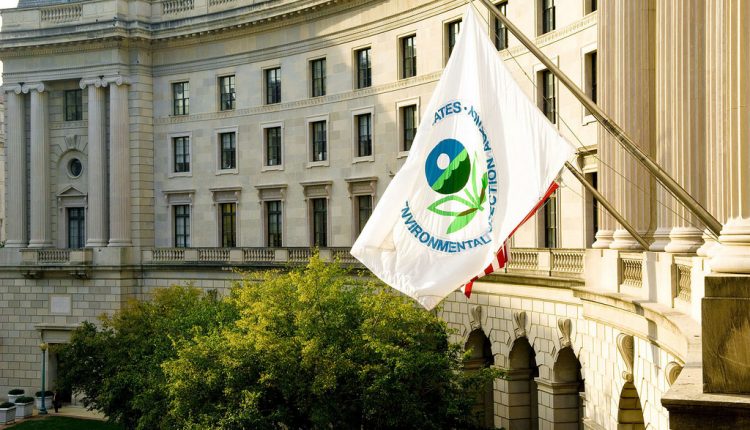
SBA Environmental Roundtable Meeting- February 5, 2021
***SBA Environmental Roundtable Meeting***
FRIDAY, February 5, 10 a.m. – 12:30 p.m.
Via Microsoft Teams Meeting
The next SBA, Office of Advocacy Environmental Roundtable will meet virtually to discuss the following topics, beginning at 10 a.m. on Friday, February 5, 2021. The meeting will be held using the Microsoft Teams platform.
Send your RSVP to david.rostker@sba.gov. A meeting link will be provided to you when you RSVP.
Agenda
10:00 AM – 10:15 AM: Introductions and Update on Chemicals Designated as High Priority under TSCA
Tabby Zeb, Office of Advocacy, SBA
10:15 AM – 11:30 AM: EPA’s Final Risk Evaluations for 1,4 Dioxane and Asbestos
Cindy Wheeler, Office of Pollution Prevention and Toxics, EPA
Alie Muneer, Office of Pollution Prevention and Toxics, EPA
11:30 AM – 12:30 PM: EPA’s Proposed Toxic Substance Control Act Fee Revisions
Marc Edmonds, Office of Pollution Prevention and Toxics, EPA
Roundtable meetings are open to all interested persons, with the exception of the press, in order to facilitate open and frank discussion about the impacts of Federal regulatory activities on small entities. Agendas and presentations are available to all, including the press. Anyone who wants to receive roundtable agendas or presentations, or to be included in the distribution list, should forward such requests to david.rostker@sba.gov. The purpose of these roundtable meetings is to exchange opinions, facts, and information and to obtain the attendees’ individual views and opinions regarding small business concerns. The meetings are not intended to achieve or communicate any consensus positions of the attendees.
Small Business Environmental Roundtable
Issues for Discussion
February 5, 2020
EPA’s Final Risk Evaluations for 1,4 Dioxane and Asbestos
EPA recently published its final risk evaluation for the sixth of its 10 high-priority chemicals under the amended Toxic Substance Control Act (TSCA). EPA completed the final risk evaluations for 1,4 dioxane and asbestos. 1,4-Dioxane is a clear volatile liquid used primarily as a solvent. This chemical is also used as a processing aid, functional fluid, laboratory chemical, adhesive, sealant, spray polyurethane foam, printing, and dry film lubricant. EPA found unreasonable risks to workers and occupational non-users from 13 conditions of use of 1,4-dioxane. EPA only evaluated chrysotile asbestos which is currently imported for use exclusively by the chlor-alkali industry. Chrysotile asbestos is also contained in products that are imported such as: sheet gaskets, brake blocks, aftermarket automotive brakes/linings, other vehicle friction products, and other gaskets. EPA found unreasonable risks to workers, occupational non-users, consumers, and bystanders from most of the conditions of use reviewed for chrysotile asbestos. A final determination that a condition of use presents an unreasonable risk of injury to health or the environment means that the agency will have to regulate those risks, which can include use-restrictions or bans, among other options.
The agency is currently in the process of developing ways to address the identified unreasonable risks and has up to one year to propose and take public comments on any risk management actions. Within this time frame, the agency will also have to consider whether any potential regulations for the identified risks will have a significant economic impact on a substantial number of small entities and if so, the agency will need to convene a small business advocacy review panel to seek advice and recommendations from representatives of affected small entities on the potential impact of the proposed rule. For this reason, it is important for small business stakeholders to be informed of the conditions of use that have been determined to pose an unreasonable risk and the basis for those determinations. At this roundtable, EPA will be providing an overview of this final risk evaluation, with time for discussion and questions.
TSCA Proposed Fees Rules
On January 11, 2021, EPA proposed revisions for its 2018 fees rule under the Toxic Substance Control Act (TSCA). EPA is required to review and adjust the fees, if necessary, every three years. Among the proposed changes, EPA is adding new fee categories and providing exemptions for some fee-triggering activities. For example, EPA is proposing to exempt three categories of manufacturers from EPA-initiated risk evaluation fees: importers of articles containing the chemical substance, manufacturers of the substance that is produced as a byproduct, and manufacturers of the substance that is produced or imported as an impurity.
EPA has also proposed various changes to adjust its fees including a new production volume-based allocation for EPA-initiated risk evaluation fees. Regarding this change, EPA acknowledges that the incorporation of a production volume fee calculation may result in some small businesses paying higher fees if they produce more than other manufacturers. As a result, EPA is specifically requesting comments on its new cost methodology, its impact on small businesses, and whether caps for fees should be considered for small businesses. The comments are due February 25, 2021.
